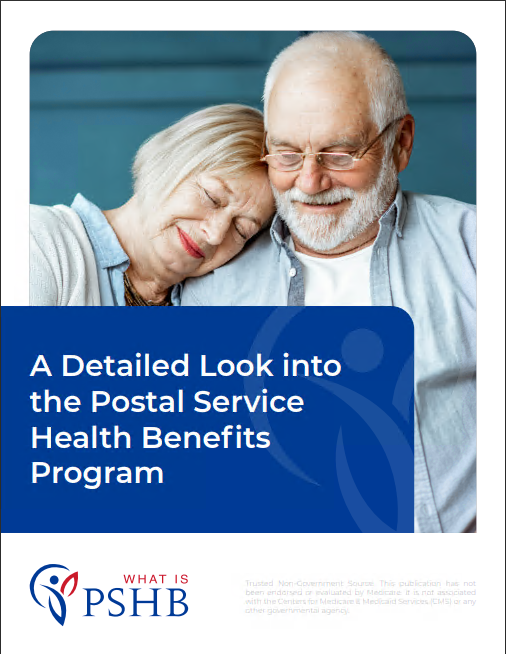Key Takeaways
- USPS retirees must enroll in Medicare Part B to maintain coverage under the new Postal Service Health Benefits (PSHB) program.
- Understanding how Medicare Part B and the PSHB program interact is crucial for managing health coverage in retirement.
How Will Medicare Part B Requirements Impact Your USPS Health Coverage in Retirement?
As a U.S. Postal Service (USPS) worker or retiree, you might be wondering how Medicare Part B requirements could affect your health coverage as you transition into retirement. With changes to the Postal Service Health Benefits (PSHB) program on the horizon, it’s essential to understand how your health insurance coverage will evolve and what you need to do to maintain it. In this article, we’ll explore the relationship between Medicare Part B and the PSHB program, offering practical insights into how these changes may impact your retirement plans.
The PSHB Program: A New Chapter for USPS Retirees
Beginning in 2025, the Postal Service Health Benefits (PSHB) program will replace the Federal Employees Health Benefits (FEHB) program for USPS employees and retirees. The PSHB was established to streamline and enhance healthcare coverage specifically for USPS workers and retirees, providing options tailored to their unique needs. However, the new program introduces a critical requirement for retirees: enrollment in Medicare Part B.
Medicare Part B, which covers doctor visits, outpatient care, and some preventive services, will become mandatory for most USPS retirees who wish to keep their PSHB coverage. This shift represents a significant change for those approaching retirement, as it alters the way health insurance benefits will be coordinated between the two programs.
Why Medicare Part B Is Essential for PSHB
Medicare Part B serves as the foundation of your health coverage once you turn 65 and become eligible for Medicare. Under the new PSHB program, retirees are required to enroll in Medicare Part B to maintain their PSHB coverage. This coordination between Medicare Part B and PSHB is designed to reduce overall healthcare costs for both retirees and the USPS, ensuring that your PSHB coverage supplements what Medicare Part B doesn’t cover.
Without Medicare Part B, you may face penalties or even lose access to your PSHB benefits. This means that enrolling in Medicare Part B is not just beneficial but essential for safeguarding your health coverage in retirement.
Navigating Medicare Part B Enrollment
When Should You Enroll in Medicare Part B?
The timing of your Medicare Part B enrollment is crucial to ensuring a smooth transition from your USPS employee coverage to your retiree coverage under the PSHB program. USPS retirees are required to enroll in Medicare Part B during their Initial Enrollment Period (IEP), which starts three months before you turn 65 and lasts for seven months. Failure to enroll during this window can lead to late enrollment penalties, increasing your monthly Medicare Part B premiums for life.
If you’re still working for USPS when you turn 65, you may qualify for a Special Enrollment Period (SEP), allowing you to delay enrolling in Medicare Part B without facing penalties. However, once you retire, you’ll need to sign up for Medicare Part B to maintain your PSHB coverage.
The Cost of Medicare Part B in Retirement
While the cost of Medicare Part B premiums is a concern for many retirees, it’s important to recognize that the combination of Medicare Part B and the PSHB program will provide comprehensive coverage. Medicare Part B will handle many of your outpatient medical expenses, while your PSHB coverage will supplement what Medicare doesn’t cover, such as copayments and deductibles. Though you’ll need to budget for Medicare Part B premiums, this coordinated coverage can help reduce your out-of-pocket healthcare costs in the long run.
How Medicare Part B and PSHB Will Work Together
The PSHB program has been designed to integrate with Medicare Part B, offering USPS retirees a seamless healthcare experience. Here’s how the two will work together to ensure that you’re fully covered:
-
Primary and Secondary Coverage: Once you enroll in Medicare Part B, it becomes your primary insurance, paying for the majority of your outpatient medical expenses. Your PSHB coverage acts as your secondary insurance, stepping in to cover what Medicare Part B does not, such as copays, coinsurance, and deductibles.
-
Prescription Drug Coverage: Under the PSHB program, you’ll still have access to prescription drug coverage, which is not included under Medicare Part B. This means that your PSHB plan will complement your Medicare coverage, ensuring that you continue to receive comprehensive healthcare benefits in retirement.
-
Coordinating Benefits: One of the key advantages of enrolling in both Medicare Part B and the PSHB program is the coordination of benefits. This means that your PSHB plan will fill the gaps in Medicare coverage, ensuring that you’re not left paying high out-of-pocket expenses for services that Medicare only partially covers.
Impact of Medicare Part B on USPS Retiree Health Coverage
Potential Cost Savings in the Long Run
Although Medicare Part B requires retirees to pay a monthly premium, it can lead to significant savings over time. Since Medicare Part B acts as your primary insurance, it will pay for most of your doctor visits, preventive care, and outpatient services. This means your PSHB plan won’t have to cover these expenses, which could lead to lower overall premiums for the PSHB program.
Additionally, having Medicare Part B coverage can protect you from unexpected medical bills in retirement. Without Medicare, you might face high out-of-pocket costs for routine medical care, which can quickly add up. Medicare Part B helps mitigate this risk by covering most of these costs, while your PSHB plan provides further protection by covering the rest.
Enhanced Access to Providers and Services
Another benefit of enrolling in Medicare Part B is the expanded access to healthcare providers. Medicare offers a nationwide network of doctors and healthcare providers, giving you the flexibility to seek care almost anywhere in the U.S. This can be particularly beneficial for USPS retirees who move or travel frequently in retirement, ensuring you have access to care wherever you go.
By combining Medicare Part B with your PSHB coverage, you’ll also gain access to a broader range of services, including preventive care and specialized medical treatments. This ensures that you have comprehensive coverage that adapts to your evolving healthcare needs in retirement.
Preparing for the Transition to Medicare Part B and PSHB
If you’re approaching retirement as a USPS worker, now is the time to start planning for the transition to Medicare Part B and the PSHB program. Here are some steps to take to ensure that your health coverage remains uninterrupted:
-
Review Your Eligibility: Determine when you’ll be eligible for Medicare Part B and the PSHB program. If you’re turning 65 soon or planning to retire, mark your calendar for your Initial Enrollment Period to avoid penalties.
-
Understand Your Costs: While Medicare Part B comes with a premium, take the time to understand how your overall healthcare costs will change in retirement. The combination of Medicare and PSHB can lead to lower out-of-pocket expenses, even if you’re paying for Medicare Part B.
-
Coordinate with Your Licensed Insurance Agent: Reach out to a licensed insurance agent who specializes in Medicare to ensure that you’re enrolling in the right Medicare plan at the right time. They can help you navigate the process and answer any questions about how Medicare Part B will interact with your PSHB coverage.
Moving Forward with Medicare Part B and PSHB
In retirement, having the right healthcare coverage is essential to maintaining your health and peace of mind. For USPS retirees, the new PSHB program offers a robust solution to your healthcare needs, but it requires enrollment in Medicare Part B. By understanding how Medicare Part B and PSHB work together, you’ll be well-prepared to manage your health coverage in retirement and avoid costly penalties.






